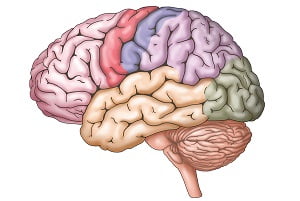How Common Are Brain Tumors?
- Updated on: Jul 24, 2024
- 3 min Read
By
- Published on Dec 11, 2018


According to the American Brain Tumor Association, more than 79000 people including men, women, and children were likely to be diagnosed with a brain tumor during 2017. The estimation includes both benign and malignant brain tumors.
The American Cancer Society predicted that in 2018, about 24,000 people will be diagnosed with a malignant brain tumor (cancerous) or spinal cord tumor and about 70 % of those with a cancerous tumor may not survive as a result of their diagnosis.
The prevalence of brain tumor is based on the type of brain tumor, age, sex, and race.
More: Brain cancer survival rate
More: Real life experiences about coping with cancer
How common are brain tumors?
There are around 120 and 150 different types of brain and central nervous system tumors that have been known so far. The standard classification used nowadays by most medical institutions comes from the World Health Organization (WHO).
The most prevalent brain tumors
Among all the different types of brain tumors, meningioma, glioblastoma, and glioma are the most common. Meningioma, a tumor that arises from the meninges (the membranes that surround the brain and spinal cord), represents 36.6 percent of all primary brain tumors, making them the most common primary brain tumor. Most of them are slow in progression and are non-cancerous.
Glioma, tumors of brain supportive tissue, accounts for 24.7 % of all primary brain tumors. Among the cancerous brain tumors, 74.6 percent are gliomas. Glioblastomas are a subset of gliomas that arise from astrocytes in the brain. These tumors represent 14.9 % of all primary brain tumors and 55.4 % of all gliomas. Read about types of brain tumors.
Prevalence of brain tumors in men and women
The probability of an individual to develop a brain tumor is very less, with a lifetime risk of 1% or less. There is a slight difference in the risk of progression of a brain tumor in men and women. According to a study published in the journal Cellular and Molecular Life Science, men not only develop more cancers, but they frequently show poorer responses to therapy as measured by overall brain tumor rates and survival rates. In 2016, an estimated 13,450 men had a brain tumor in comparison to 10,350 women.
It is ambiguous why men have a predisposition towards developing more cancer. Biological factors may describe the differences in rates of brain tumors in a certain sex. According to a study published in the Journal of the National Cancer Institute, hormonal differences could result in different prevalence rates between males and females. Harmon Eyre, MD, former chief medical officer of the American Cancer Society states, ‘meningioma is more common in females than males’ as this tumor has estrogen and progestin receptors. Other brain tumors occur more in men than women.
Prevalence of brain tumors in children and adults
Brain tumors can affect children differently as compared to adults. The average age for all primary brain tumors is 59, but brain tumors are the most common form of solid tumors among children under age 15 and represent about 20 percent of all childhood cancers. Read about brain tumors in children.
Even though children of any age may be affected, brain tumors are most common and a leading cause of cancer-related deaths in children up to 14 years of age. Brain and central nervous system cancers are the third most common cancers and the third most common cause of cancer-related deaths among teenagers and young people between 15 and 39 years of age.












